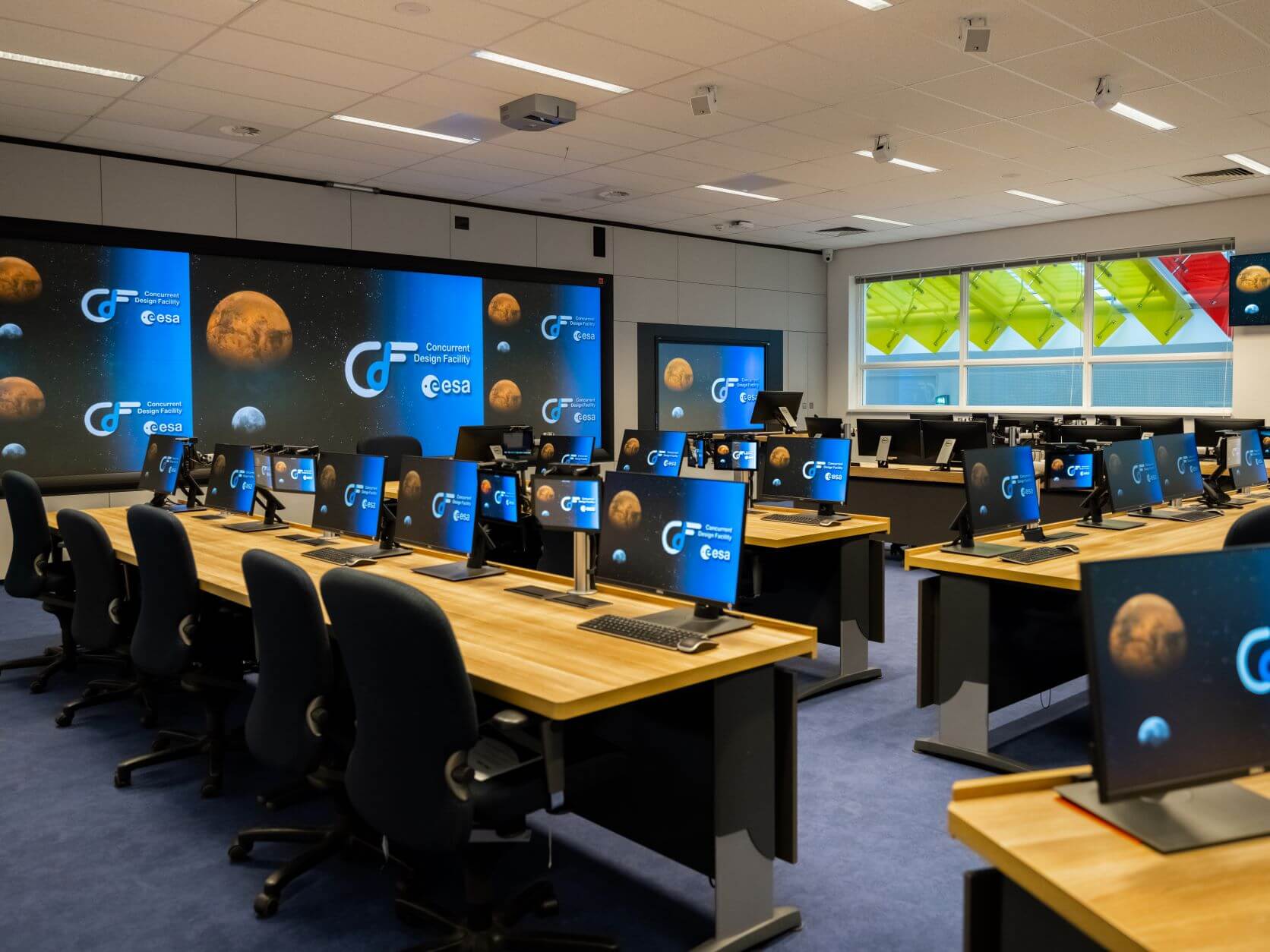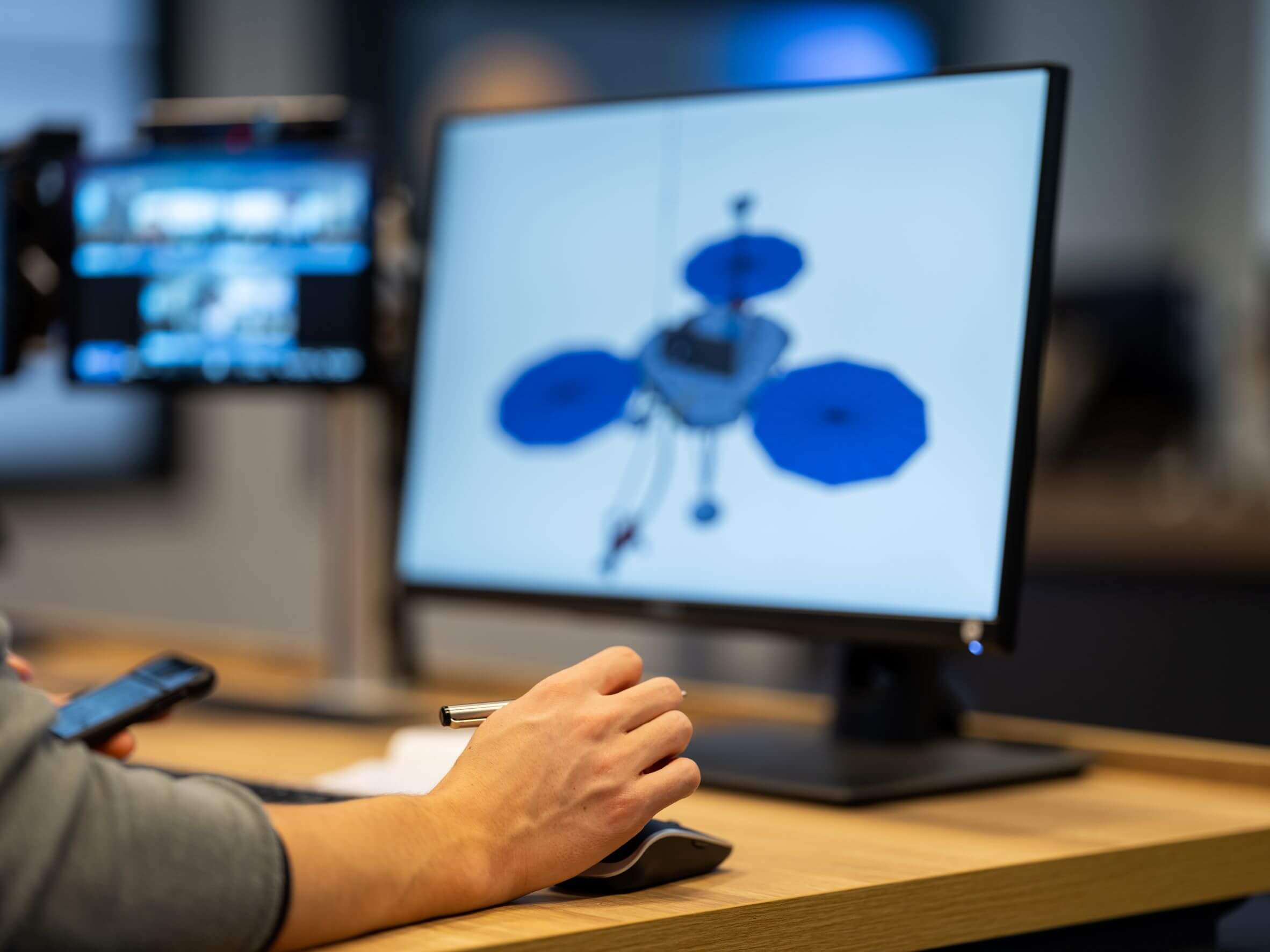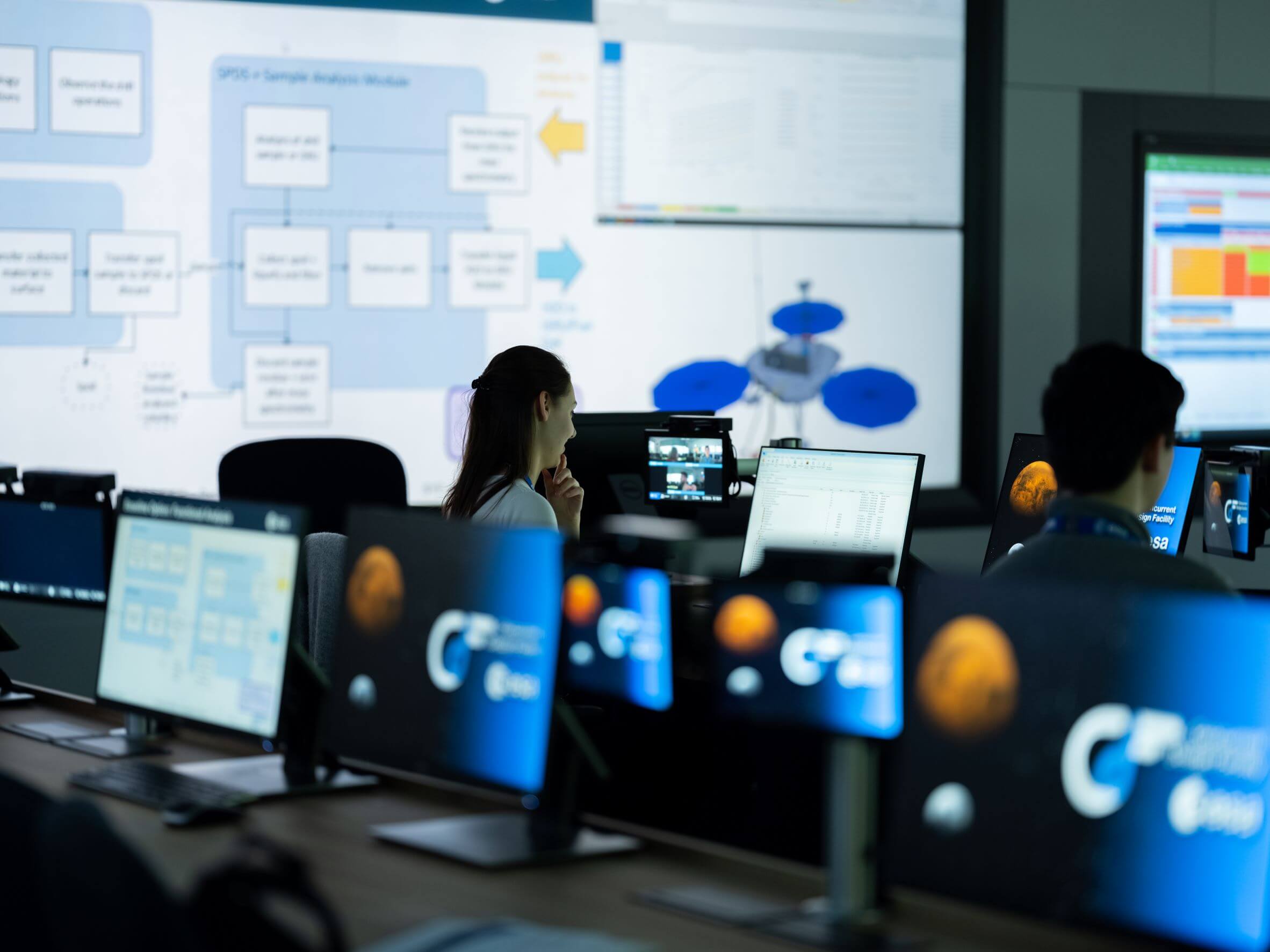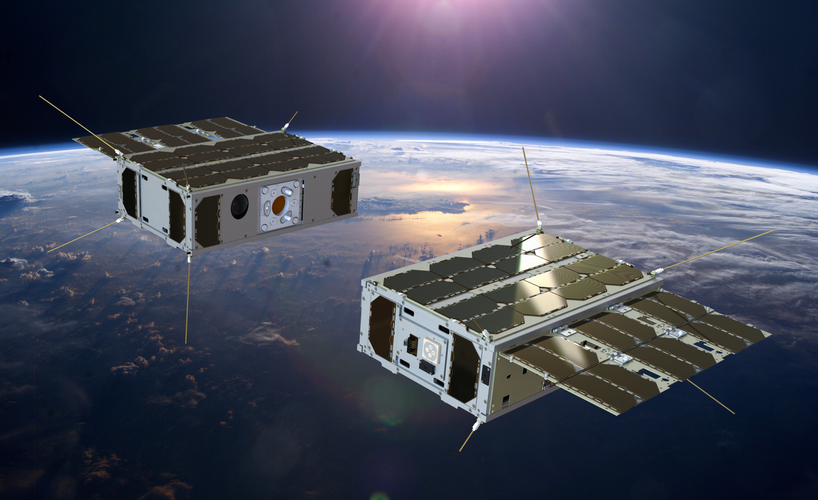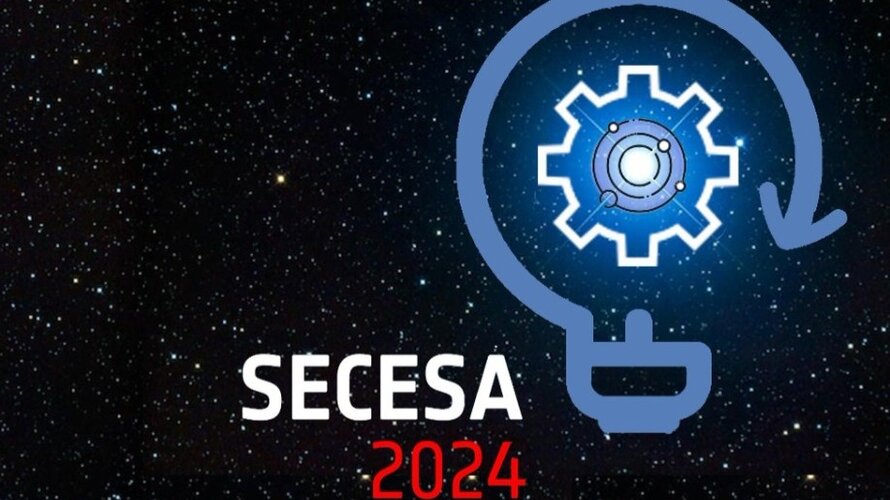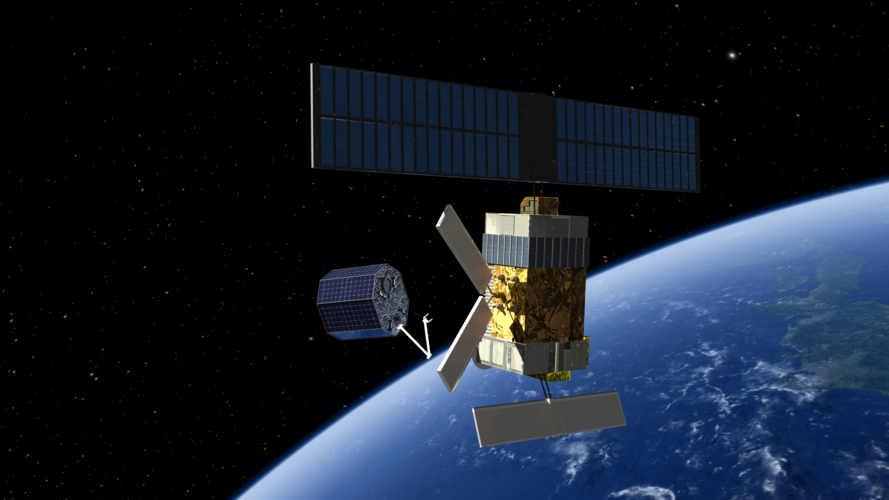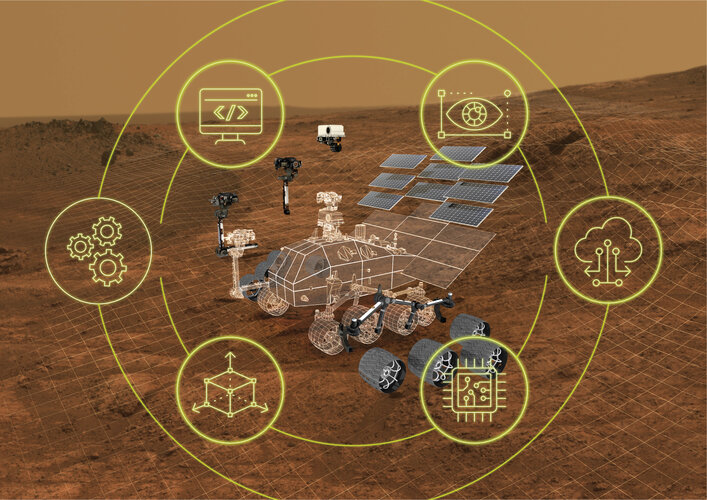Concurrent Design Facility
The Concurrent Design Facility (CDF) provides a collaborative, cooperative, collective and simultaneous engineering working environment
The Concurrent Design Facility (CDF) is a state-of-the-art facility equipped with a network of computers, multimedia devices and software tools, which allows a team of experts from several disciplines to apply the concurrent engineering method to the design of future space missions.
The CDF’s infrastructure, methodology, tools and processes allow teams of experts from different engineering disciplines to work in close coordination in the same place, at the same time, to develop complex designs very quickly -- typically, in a matter of a few weeks compared to the duration of standard pre-Phase A design period, which is several months.
Concurrent Engineering provides a collaborative, co-operative, collective and simultaneous engineering working environment.
For general enquires regarding this TEC location please refer to the assigned contacts:

For testing requests, access to lab facilities, training and consultancy services, please refer to the assigned contacts:

ESA’s Concurrent Design Facility has adopted a systematic approach to integrated product development that emphasises the response to customer expectations.
It embodies team values of cooperation, trust and sharing in such a manner that decision-making is done by consensus, involving all perspectives in parallel, from the beginning of the product life-cycle.

The concurrent engineering approach is based on five key elements:
Process
Multidisciplinary team
Integrated design model
Facility
Software infrastructure
The Concurrent Design Facility was established at ESTEC in November 1998, initially on an experimental basis, as an initiative under the sponsorship of the General Studies Program (GSP).
The Concurrent Design Facility was established at ESTEC in November 1998, initially on an experimental basis, as an initiative under the sponsorship of the General Studies Program (GSP).
Other European design centres have been created on the basis of the best experiences coming out of the ESA CDF.
CDF ROLE
Ideas for new space missions and systems are technically and programmatically assessed in ESA’s state-of-the-art Concurrent Design Facility. Since spacecraft design is based on mathematical models, which rely on specific types of software, all available in the CDF, our user teams have the unique opportunity, throughout a study, to define and exchange a consistent set of design parameters with other specialists and see how any changes to any one of them can immediately impact any other. In this way, numerous design iterations can be performed faster, and different design options can be easily analysed and compared.
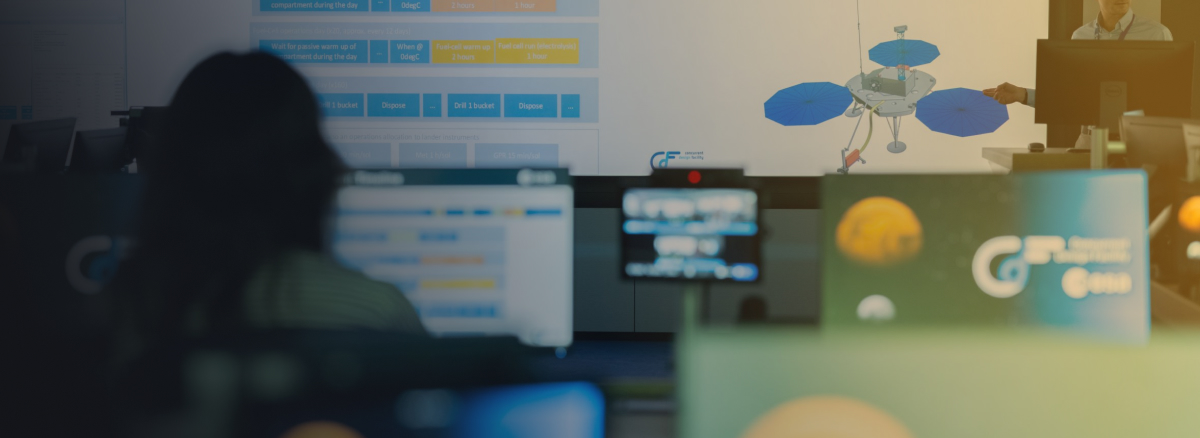
FACILITIES
The CDF consists of four design rooms and a number of support and ancillary rooms grouped around a central foyer. The main design room, incorporating a 6 x 2 m LED Video Wall with 33 computer stations (some dedicated to a specific technical discipline, others configurable to any discipline) is used as the primary room for large mission or system of systems studies, while the project design rooms are smaller and are typically used for instrument design studies or reviews as well as splinter meetings for a larger study.
All the rooms can be linked via an audio visual over IP network allowing data to be shared on any or all of the screens in the other rooms. All the rooms also have full video conference facilities and seamlessly integrate with Microsoft Teams. A 3D-printing facility allows teams to examine tangible prototypes of the systems that are being designed.
A 10-inch display at each station is used to control a PC or laptop and to pull data from various sources. Users can employ their own laptops or use in-room computers, either of which can be displayed on the in-room screen if selected by the moderator. Each workstation also has a camera and microphone to enable a more inclusive experience for remote study participants.
The CDF is primarily used to assess the technical and financial feasibility of future space missions and new spacecraft concepts (e.g. internal pre-phase A or Level-0 assessment studies) providing:
The CDF is primarily used to assess the technical and financial feasibility of future space missions and new spacecraft concepts (e.g. internal pre-phase A or Level-0 assessment studies) providing:
New mission concepts assessment
Space systems trade-offs and options evaluation
New technology validation at system/mission level
Payload instrument conceptual designing
Reviews of industrial phase A studies
Definition and consolidation of requirements
Anomaly investigation
Roadmapping
Multidisciplinary brainstorming
Education and training
Design Rooms
MAIN DESIGN ROOM
- 6 x 2 m LED video wall using a window management system capable of displaying different video sources simultaneously.
- Advanced room control system allowing the moderator to control and operate all room equipment from a graphical user interface and direct any content, including those coming from experts' devices, directly to any display – and experts can pull any content displayed within the room to their local preview display.
- 82" interactive touch display that allows full PC functionality to be operated through the screen, plus on-screen drawing.
- 30 design stations, each equipped with a workstation, wireless mouse and keyboard, 24" touch display, 10" touch displays for content control and video conferencing using high quality cameras and microphones.
- Bring Your Own Device (BYOD) connectivity using a wireless presentation system.
- 2 Presenter desks with 24” Touch Display and Presenter tools
- 1 moderator desk with full room control capabilities.
- • Video conferencing system supporting both end-to-end and cloud-based video conferencing such as Microsoft TEAMS and WebEx.
- PTZ cameras and ceiling microphone panels to capture a presenter's speech and video.
- Visualiser
- 4 x 55" LED TVs for displaying study related information and video conferencing.
- 1 x 55" LED TV displaying a graphical room layout highlighting those experts with activated microphones and cameras.
- LCD privacy glass rear wall used to project additional study and presentation content.
Project Design Room and Micra Room
- 1x 65" and 2x 50" LED TVs.
- 1x 65" digital whiteboard/touchscreen.
- Advanced room control system allowing the moderator to control and operate all room equipment from a graphical user interface and direct any content.
- Designed as ‘Bring Your Own Device’ (BYOD) rooms, equipped with wireless presentation capabilities to enable users to easily share their screens alongside HDMI/Display Port connectors in the desks.
- Video conferencing system supporting both end-to-end and cloud-based video conferencing such as Microsoft TEAMS and WebEx
- Main design room viewing gallery.
SUPPORT DESIGN ROOM
- 3x 65" 2x 50" LED TV's.
- 1x 65" digital whiteboard/touchscreen.
- Advanced Room control system allowing the moderator to control and operate all room equipment from a graphical user interface and direct any content.
- Designed as ‘Bring Your Own Device’ (BYOD) room, equipped with wireless presentation capabilities to enable users to share their screens alongside HDMI/Display Port connectors in the desks.
- 16:9 Laser projector with fixed screen.
- Video conferencing system supporting both end-to-end and cloud-based video conferencing such as Microsoft TEAMS and WebEx.
Services

It is amazing to see the number and diversity of applications to which concurrent engineering is applied in Europe. My understanding is that the CDF has inspired the majority of them
Mark Adler, NASA/Jet Propulsion Laboratory
European industry and national space agencies are using the CDF as a source of inspiration and a guide to creating their own facilities and shaping their own design processes. In support of this, ESA’s CDF is open to provide advice and share our experiences with the goal of assisting European partners in improving their processes.
Traditionally, engineers faced with the task of designing a complex new system or architecture work in sequence, one step at a time, passing the design parameters and data from one subsystem specialist to the next, without any interaction with the rest of the team during the process. The CDF enables ‘concurrent engineering’ methodology based on teamwork and focused on a common design model that evolves iteratively in real time as the different subsystem experts provide their contributions. Designers and customers discuss and consolidate requirements and take decisions by consensus on the spot to produce an optimised design within the cost and programmatic constraints.
Services
Technical expertise
- Consultancy
- Training
- Mission feasibility assessment, including technical programmatic and cost aspects
- Education
Analysis
- Analysis of preliminary requirements
- Analysis of Mission and Systems Design options
- Analysis of Systems Architectures
- Analysis of Technology
- State of the Art Gaps Identification
- (each analysis is based on the involvement of the required expertise in the team)
CDF CAN SUPPORT YOU WITH SPACE MISSION DESIGN, COST AND PROGRAMMATIC ADVICE, INCLUDING SCHEDULING, MODEL PHILOSOPHY, OPERATIONS AND RISK ASSESSMENT VIA SEVERAL CHANNELS:
- Third Party sales services and consultancy expertise
- Lessons learned and workshop / conferences proceedings
- Educational / university courses support
Meet the CDF founder Massimo Bandecchi to understand the approach behind this extraordinary facility
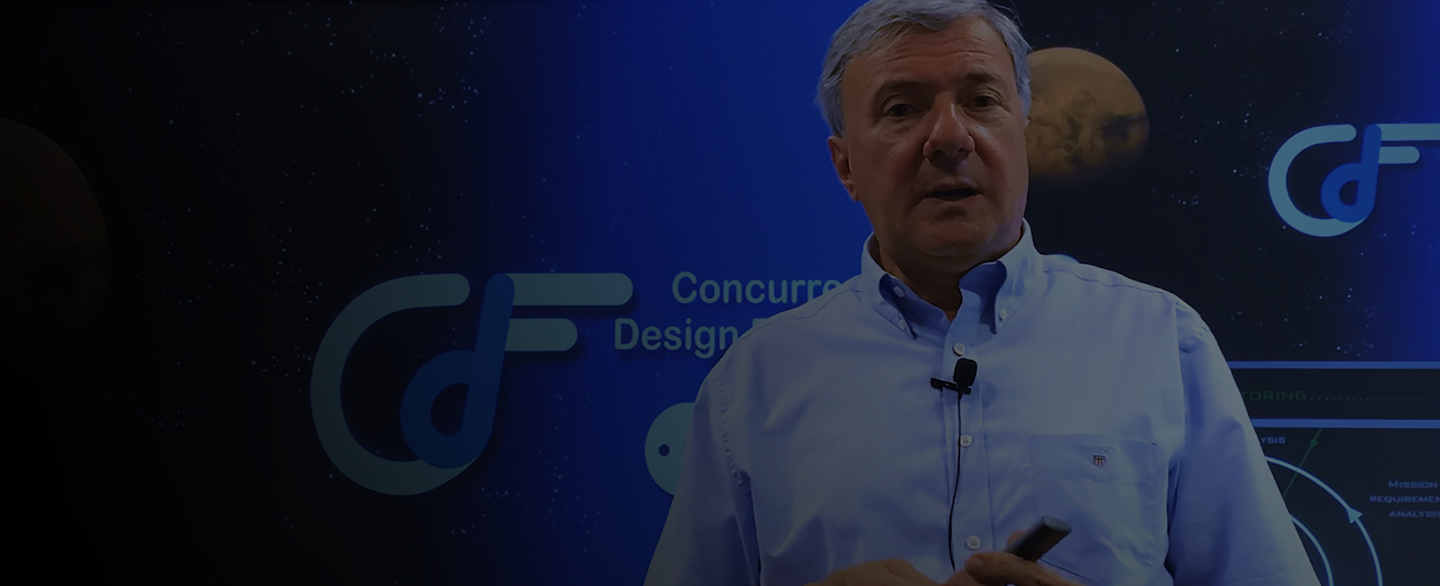
WE CAN HELP YOU GET
THE BEST OUT OF
THE CONCURRENT DESIGN FACILITY


